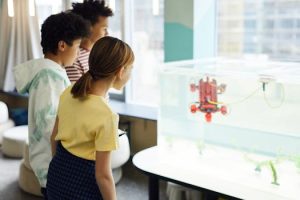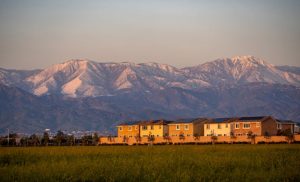School Facilities and Learning Environments
In today’s fast-paced world, education plays a crucial role in shaping the future generation. As a result, the learning environment has become a significant factor in ensuring quality education. While teachers and curriculum play a vital role, school facilities and learning environments also impact a student’s overall learning experience. In this article, we will explore how school facilities and learning environments affect students and their academic performance.
The Role of School Facilities
School facilities refer to the physical components of a school, including classrooms, libraries, labs, auditoriums, and playgrounds. These facilities are essential in promoting a conducive learning environment for students. They should be safe, clean, and well-maintained to ensure the well-being and safety of students and staff.
Impact on Students’ Health and Safety
Poorly maintained school facilities are a significant concern for students’ health and safety. Inadequate ventilation, lighting, and temperature can lead to health issues such as headaches, eye strain, and fatigue. Moreover, faulty equipment and outdated facilities can also pose a safety hazard.
On the other hand, well-maintained facilities promote a healthy and safe learning environment. Properly ventilated, adequately lit, and temperature-controlled classrooms create a comfortable learning space for students. Upgraded facilities, such as science labs and computer rooms, provide students with hands-on learning experiences and prepare them for the outside world.
Influence on Students’ Academic Performance
Research has shown that school facilities have a significant impact on students’ academic performance. A study by the National Bureau of Economic Research found that improving school infrastructure resulted in a 9% increase in test scores. Additionally, upgraded facilities and technology also promote a more engaging and dynamic learning environment, ultimately leading to better academic outcomes.
Importance for Students with Special Needs
School facilities also play a crucial role in accommodating students with special needs. Properly designed facilities, such as ramps and accessible classrooms, ensure that students with disabilities can access their learning environment without any barriers. This not only promotes inclusivity but also helps these students thrive academically.
The Impact of Learning Environments on Students
Learning environments, on the other hand, refer to the social, emotional, and physical context in which learning takes place. This includes the classroom culture, relationships with peers, and the overall school atmosphere.
Affection on Students’ Attitude and Behavior
The learning environment has a profound impact on students’ attitude and behavior towards learning. When students feel safe, supported, and valued in their learning environment, they are more motivated and engaged. On the other hand, a negative learning environment, characterized by bullying, harassment, and lack of support, can lead to a decrease in academic performance and overall well-being.
Influence on Students’ Social Skills
The learning environment also affects students’ social skills. A positive environment encourages collaboration, communication, and respect among students. Such skills are essential for students to succeed in their personal and professional lives. Moreover, learning in a diverse environment exposes students to different cultures and perspectives, promoting open-mindedness and empathy.
Importance of a Healthy Learning Environment
Health and well-being are crucial for students to excel academically. A healthy learning environment helps in reducing stress levels and promoting overall well-being. Schools that prioritize mental health and emotional regulation, such as having designated quiet spaces and promoting mindfulness, create a positive learning environment that benefits students in the long run.
In Conclusion
School facilities and learning environments play a vital role in shaping students’ academic performance, health, and well-being. It is essential for schools to prioritize maintaining and upgrading facilities and creating a positive and inclusive learning environment for students to thrive. After all, it is in these learning environments that tomorrow’s leaders, innovators, and problem-solvers are nurtured.









